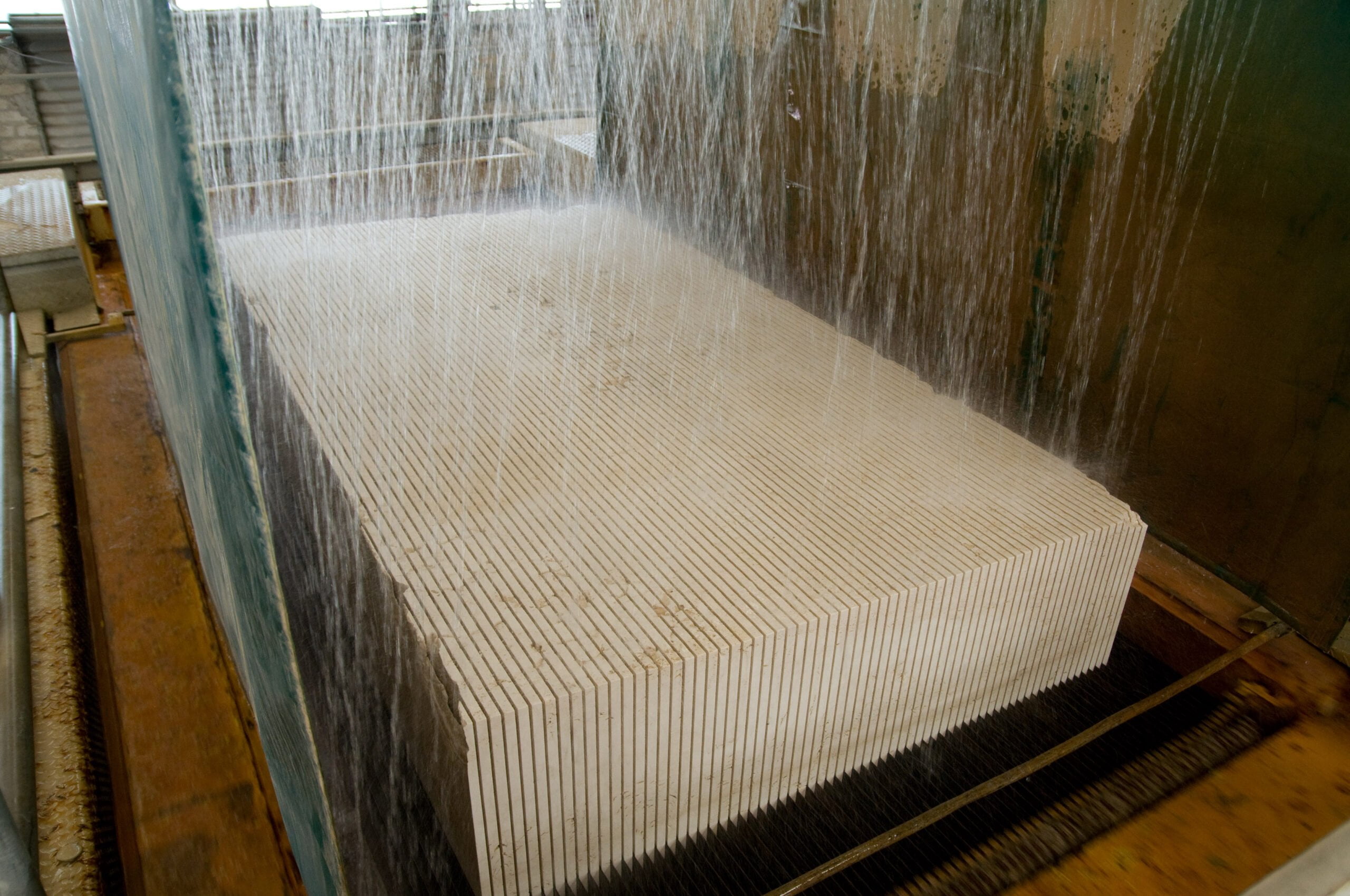Formation and Features of Roman Travertine
Reading about the formation and the specific features of roman travertine is the first step to a confident choice. Being the outcome of a slow and yet constant process of stratification, lasting hundreds of thousands of years, it carries the secrets of this world. Let us accompany you to the discovery of this elegant natural stone.
How does travertine form?
Geologists classify Travertine as a terrestrial sedimentary rock mainly consisting of calcium carbonate minerals (95%). Its formation is the result of the accumulation of these minerals, or sediments, in deposits. Certainly hot thermal springs play a huge role in the formation of mineral deposits. When the water level drops, the erosion takes place. Then, following a rise in the water level, sediments settle on the bottom.
The most ancient and valuable kind of travertine is roman travertine, quarried in the Acque Albule Basin, in Tivoli. Here is where our quarries and laboratories are located. Before proceeding with the extraction process, the selected area within the basin requires a drainage, given the sulfurous water in which the travertine is immersed. Next to the quarry area, there are three mountains (Lucretili, Tiburtini, and Cornicolani), which surround the basin, therefore the supply of water is constant and significant.

Moreover, roman travertine natural properties originate from the distinctive depth of the quarry. In fact, the pressure to which the sediments are exposed influences the texture of this stone. In other words, the extracted blocks feature extreme compactness, while the porosity frequently associated to this stone is recognizable only on the surface. Such natural characteristics make this stone particularly suitable for cutting, incision, and polishing. Visual effects are astonishing. Especially when they are associated with other innate qualities: roman travertine is naturally non-slip, requires a minimum level of maintenance, and resists to extreme weather conditions.
A surprising aspect of travertine is the time needed for this stone to form: it is estimated that the formation process of roman travertine from Tivoli required between 115 and 30 thousand years, and started in Late Pleistocene!
What is vein cut and cross cut travertine?
Undoubtedly, the traditional veined pattern of travertine is pleasant to look at. Often façades and interiors are completely dressed up in tiles of this natural stone. Its exquisite visual effect confers warmth and calmness to the ambiance. This effect is completely spontaneous and generated by the oxides that compose the sediments.
The cutting techniques can reveal or conceal the veining. The vein cut is highly appreciated for disclosing the long process of sedimentation. In other words, the blades saw the block following a line parallel to the veins. Nevertheless, the cross cut makes it is possible to have a cut perpendicular to the veining. The final result is a uniform streaks-free pattern.

Roman travertine typical color is light, with beige, cream and light brown shades. However, our product line includes a full range of tones. For each tone (light, dark, silver and white) there are many color variation and patterns, as briefly illustrated below.
| WHITES | LIGHTS | SILVERS | DARKS |
| ALABASTRINO D, beige and brick-red streaks on a light background | CLASSICO C, light brown tones on a cream background | SILVER D, beige, brown, and grey shades | NOCE C, beige, coffee, and brick-red tones |
| ALABASTRINO L, cream-colored streaks on a white background | CLASSICO D, beige and cream tones on a light brown background | SILVER FUMÈ, grey, cream, and beige shades | NOCE D, beige, grey, and brown tones |
| BIANCO MICHELANGELO, beige streaks on pure white background | NAVONA, beige and milky white nuances | SILVER L, grey, caramel, and cream shades | OCEAN BLUE, cream, beige, and blue tones |
| OSSO, pure white | NAVONA SILVER, beige and grey-blue nuances | SILVER PLATINUM, silver and beige shades | STORM, silver and beige tones |
| VESTA, dark green, beige, and cream tones |
Tradition and innovation
The extremely long formation process of roman travertine proves that unique gifts are worth the waiting, especially when integrated with highly functional and alluring features.
When, at the beginning of the XXth Century, the natural stone market recorded an increasing interest in roman travertine worldwide we were there. We started our business in 1923, and to these days this precious natural stone has starred in thousands of architectural and artistic projects. We offer you a final product that easily responds to your needs. For lasting and impressive results, trust the experience and Know-How of those who, for four generations (and counting), dedicated their life to manufacturing roman travertine.




Follow Us On Social Media: